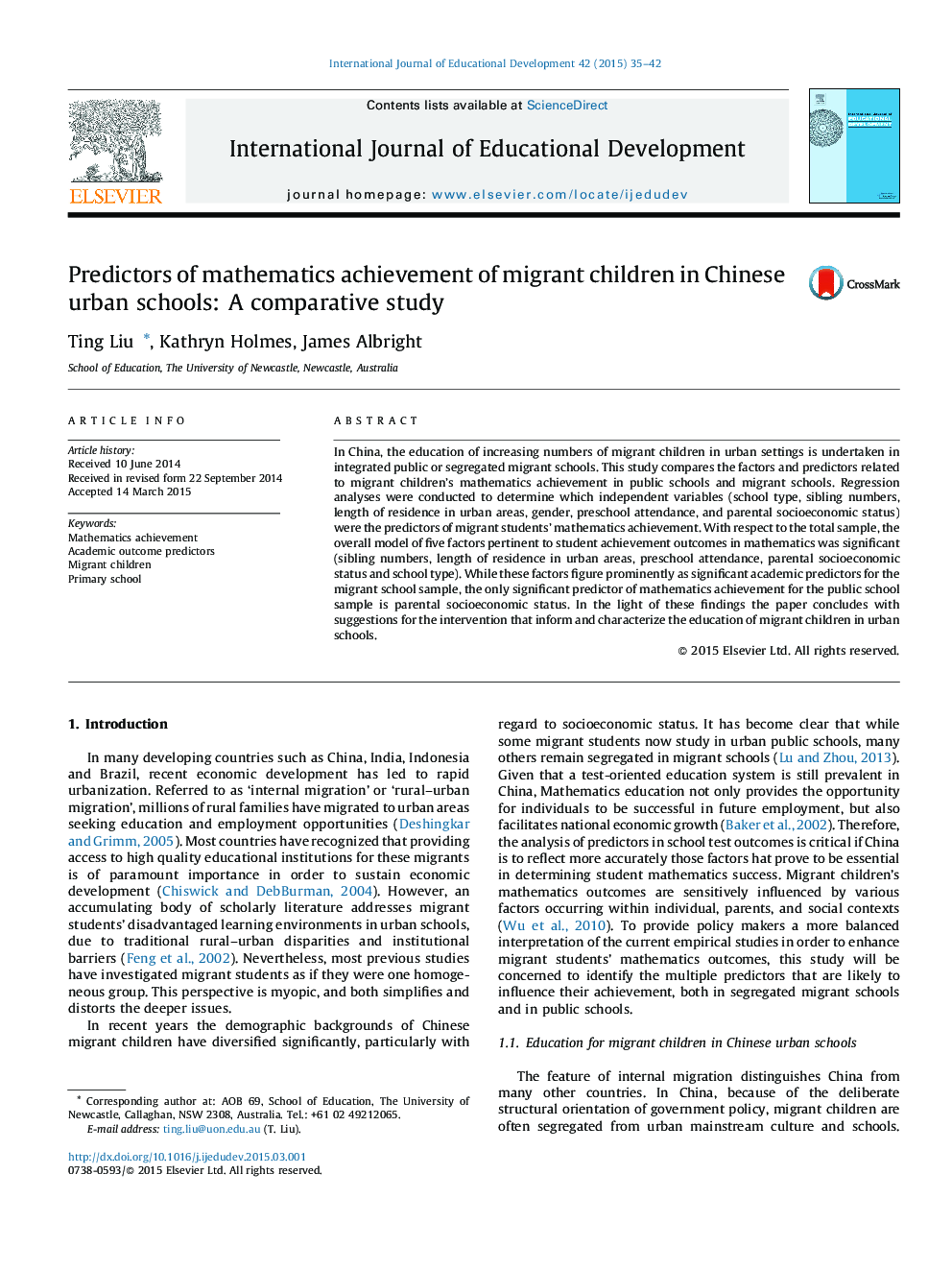| Article ID | Journal | Published Year | Pages | File Type |
|---|---|---|---|---|
| 356040 | International Journal of Educational Development | 2015 | 8 Pages |
•This study identifies mathematics achievement of migrant students.•Migrant students are not regarded as one homogeneous group.•Education intervention is suggested for migrant children.
In China, the education of increasing numbers of migrant children in urban settings is undertaken in integrated public or segregated migrant schools. This study compares the factors and predictors related to migrant children's mathematics achievement in public schools and migrant schools. Regression analyses were conducted to determine which independent variables (school type, sibling numbers, length of residence in urban areas, gender, preschool attendance, and parental socioeconomic status) were the predictors of migrant students’ mathematics achievement. With respect to the total sample, the overall model of five factors pertinent to student achievement outcomes in mathematics was significant (sibling numbers, length of residence in urban areas, preschool attendance, parental socioeconomic status and school type). While these factors figure prominently as significant academic predictors for the migrant school sample, the only significant predictor of mathematics achievement for the public school sample is parental socioeconomic status. In the light of these findings the paper concludes with suggestions for the intervention that inform and characterize the education of migrant children in urban schools.
